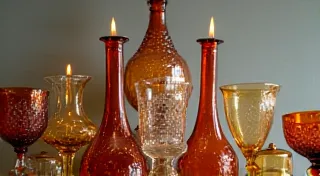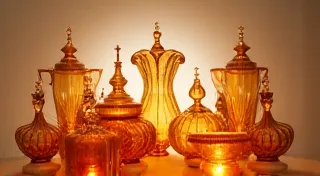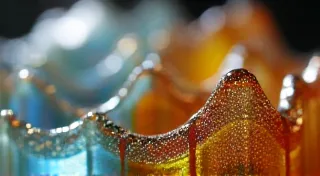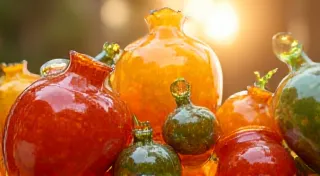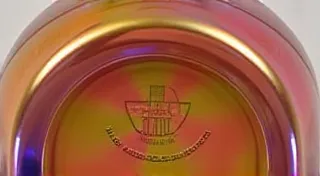Rare and Valuable Carnival Glass Pieces: The Ultimate Finds
Carnival glass, with its mesmerizing iridescence and vibrant colors, holds a special place in the world of glass collecting. While many pieces are beautiful and relatively affordable, a select few command incredibly high prices due to rarity, exceptional color, unique patterns, or association with significant makers. This article explores some of the most sought-after and valuable carnival glass pieces, offering insights for collectors and enthusiasts alike. Understanding the nuances of carnival glass collecting can be rewarding, and knowing which pieces command premium prices can be a fascinating journey.
Understanding Value Factors
Before diving into specific pieces, it’s crucial to understand what contributes to a carnival glass piece’s value. Several factors are at play:
- Rarity: Naturally, fewer examples of a particular pattern or color increase its desirability. The rarer the color or pattern, the higher the demand – and therefore the value.
- Color: Certain colors are far more scarce than others, driving up prices. This scarcity is often tied to the specific manufacturing processes and the availability of raw materials during a particular production period.
- Pattern Complexity: Intricate and detailed patterns are often more valuable. The skill required to create these patterns, both by hand and through the pressing process, contributes to their perceived value.
- Maker's Mark: Pieces identified with specific, historically important makers can command premium prices. Certain manufacturers were known for higher quality glass and more innovative designs.
- Condition: As with any antique, excellent condition is paramount. Chips, cracks, and excessive wear significantly diminish value. Even minor imperfections can significantly impact the price.
- Production Period: The timeframe during which a specific carnival glass piece was produced can also influence its value. Pieces from earlier, more limited production runs are often more desirable.
Top Tier Treasures: The Most Valuable Carnival Glass
Let's look at some of the pieces that consistently top the lists of valuable carnival glass:
1. Cobalt Blue Carnival Glass
Cobalt blue is arguably the most desirable and rarest carnival glass color. The intense, deep blue hue is stunning and few examples exist compared to other colors. The difficulty in achieving this color consistently during manufacturing contributes significantly to its rarity. It is most commonly found in the "finger bowls" and "slagheap" patterns, further increasing their desirability. Many collectors dedicate significant portions of their collections to seeking out perfect examples. The overall aesthetic appeal, combined with the scarcity, makes it a true prize.
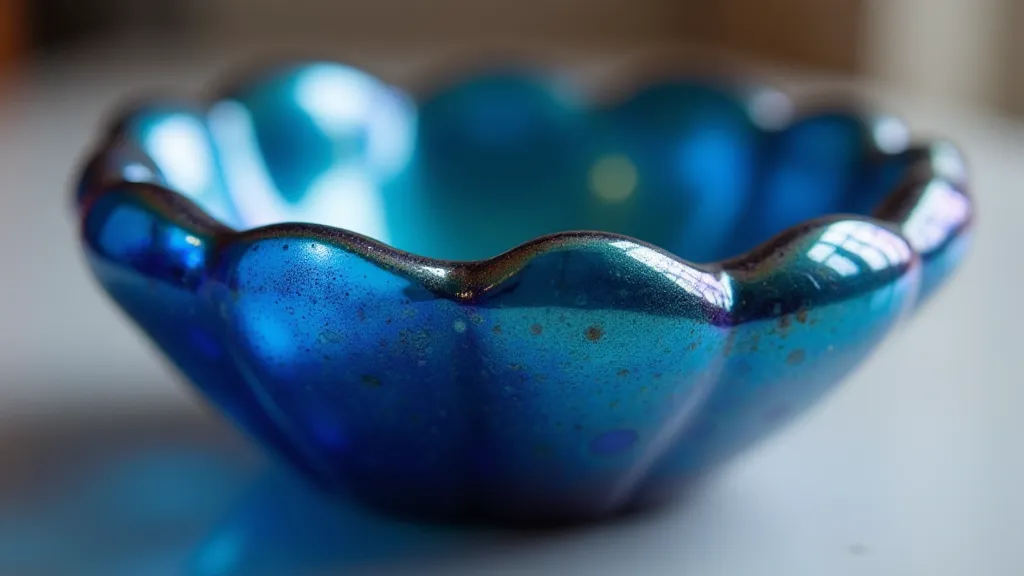
2. Marigold Luster – The All-Around Favorite
While not as rare as cobalt blue, exceptional examples of Marigold Luster carnival glass can be incredibly valuable. The vibrant gold and orange iridescence is captivating, and particularly well-executed pieces in patterns like "Blackton" or "Vine & Moss" are highly sought after. Understanding the range of popular carnival glass patterns is crucial for any serious collector, as certain patterns naturally command higher prices due to their complexity and relative rarity. The brilliance of the iridescence is key; a dull or faded luster diminishes the value significantly. The interplay of light and color in Marigold Luster is a direct result of the manufacturing process, involving a specific chemical blend applied to the glass surface before firing – a technique that was not always consistent, contributing to the variance in value.

3. Ruby Flash Carnival Glass
Ruby Flash is another elusive color. Its intense red glow makes it a prize for collectors. Pieces are often found in the "slagheap" or "fire-king" patterns. The manufacturing process for Ruby Flash was complex, and the resulting color variation is often a key factor in determining value. Collectors are constantly searching for pieces exhibiting the most vibrant and consistent ruby hue. This color often benefits from backlighting, which truly accentuates its unique intensity.
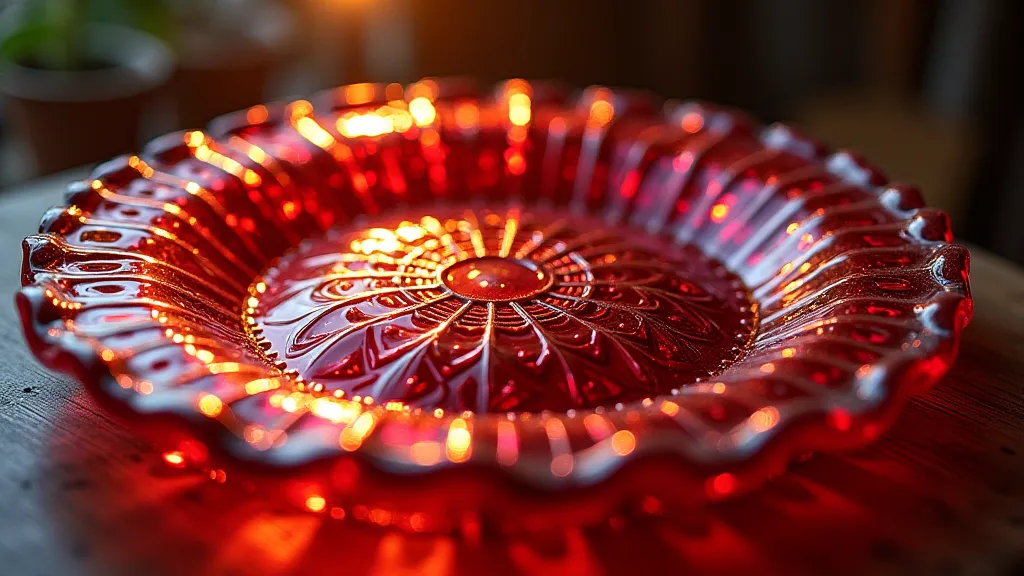
4. Imperial Favrile Carnival Glass
Imperial Favrile, manufactured by the renowned Tiffany Studios, represents a high-end tier of carnival glass. The quality of the glass, the artistry in the designs, and the association with a prestigious brand all contribute to their value. Patterns such as "Wisteria" and "Ripple" are especially prized. Tiffany's reputation for exquisite craftsmanship and innovative designs places Imperial Favrile in a different category altogether, far exceeding the value of most other carnival glass pieces. Authentication is especially important with Favrile, given the prevalence of reproductions and misidentified pieces. The sheer artistry involved in creating Favrile pieces often demands an expert eye to truly appreciate, and even more so to authenticate. The techniques employed were groundbreaking for their time, and continue to inspire artisans today.
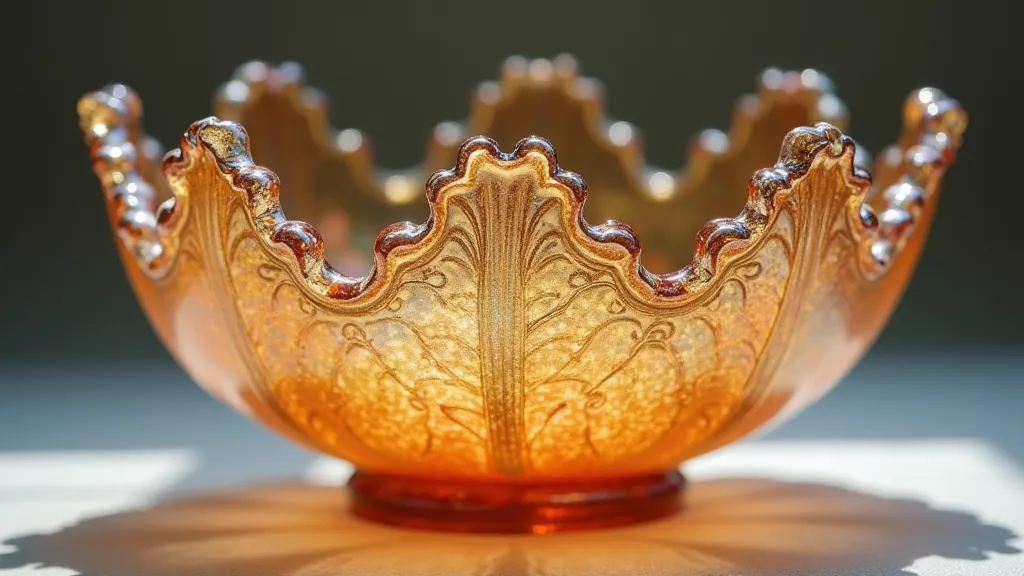
5. Seafoam Carnival Glass
Seafoam, with its swirling greens and blues, possesses a unique beauty. This color is relatively uncommon, making well-preserved examples highly desirable among collectors. The subtle color shifts and the way the light plays with the glass make each piece a unique work of art. Protecting your collection from damage and preserving its beauty is vital. Learning about caring for your carnival glass collection is essential for maintaining its value and preventing deterioration. Seafoam’s ephemeral beauty is often compared to the ocean’s surface on a cloudy day, lending it a sense of tranquility and mystique.
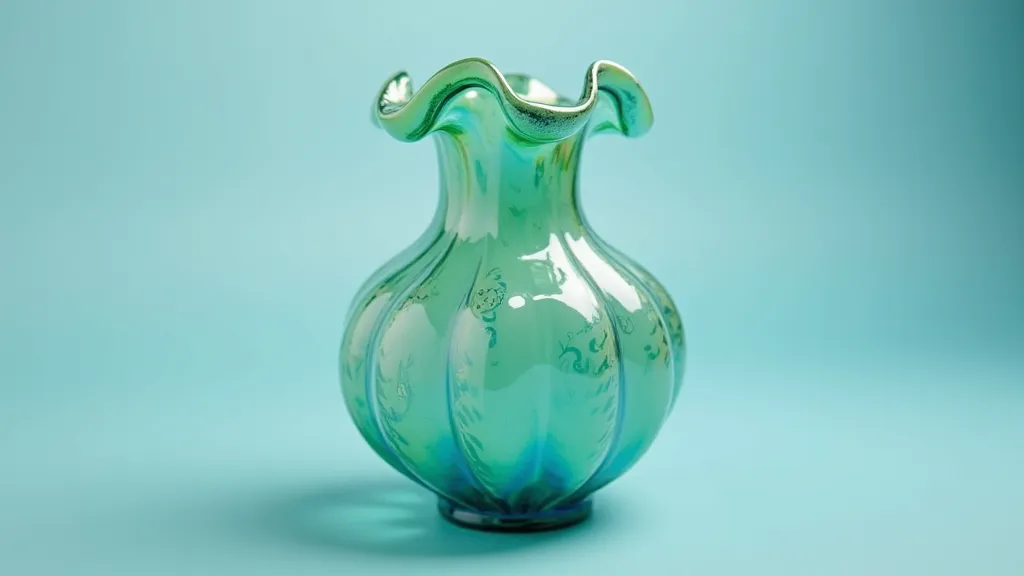
Identifying and Authenticating Rare Pieces
Authenticating rare carnival glass can be challenging. It's critical to research maker's marks, understand manufacturing techniques, and be familiar with known patterns. Many pieces are misattributed or simply mistaken for higher-value pieces, underscoring the importance of thorough investigation. Recognizing the nuances of different manufacturers can be tricky, as some companies imitated each other's designs or used similar techniques. Consulting with glass experts and joining carnival glass collecting clubs can also increase your knowledge and ability to identify true treasures. For instance, understanding the historical context and specific manufacturing processes used by Whitefriars and other companies can significantly aid in identification. Many believe that carnival glass's connection to the 'Whitefriars' Company is a fascinating aspect of its history and value. The subtle differences in glass thickness, applied iridescence, and the presence (or absence) of specific mold marks can all be crucial indicators.
Common Mistakes Carnival Glass Collectors Make
Even experienced collectors sometimes fall prey to common pitfalls. Rushing into purchases, failing to research a piece's provenance, and neglecting to properly care for existing pieces are all mistakes that can impact the overall value of a collection. Collectors often overestimate the rarity of certain colors or patterns, leading to inflated prices. Misidentifying reproductions as authentic pieces is another frequent error. It's crucial to understand the evolution of carnival glass manufacturing – early pieces often exhibit unique characteristics due to the experimentation and refinement of techniques. Learning from the experiences of other collectors can help avoid these mistakes. Furthermore, failing to properly store and display pieces can contribute to their deterioration, diminishing their value over time. The effects of sunlight and temperature fluctuations can be particularly damaging to the delicate iridescence. Avoiding common mistakes carnival glass collectors make can ultimately safeguard your investment and enhance your collecting enjoyment. A keen understanding of these mistakes demonstrates a deeper appreciation for the craft and its historical context.
Expanding Your Carnival Glass Knowledge
The world of carnival glass collecting is vast and rewarding. Beyond identifying valuable pieces, there's a rich history and fascinating technical details to explore. The development of new glassmaking techniques, the influence of Art Nouveau and other artistic movements, and the economic factors that drove production are all interconnected aspects of this captivating hobby. Delving into these areas not only enhances your appreciation for these beautiful objects but also equips you with the knowledge to make informed collecting decisions.
Conclusion
The world of valuable carnival glass is exciting and rewarding for serious collectors. While acquiring these rare pieces can be a significant investment, the beauty, history, and artistry they represent are truly exceptional. Continued research, careful observation, and a passion for this unique form of glass art will guide you on your collecting journey. Remember, building a valuable collection is a marathon, not a sprint. Each piece tells a story, and the more you learn about the history and artistry behind these remarkable objects, the more rewarding your collecting experience will be.
